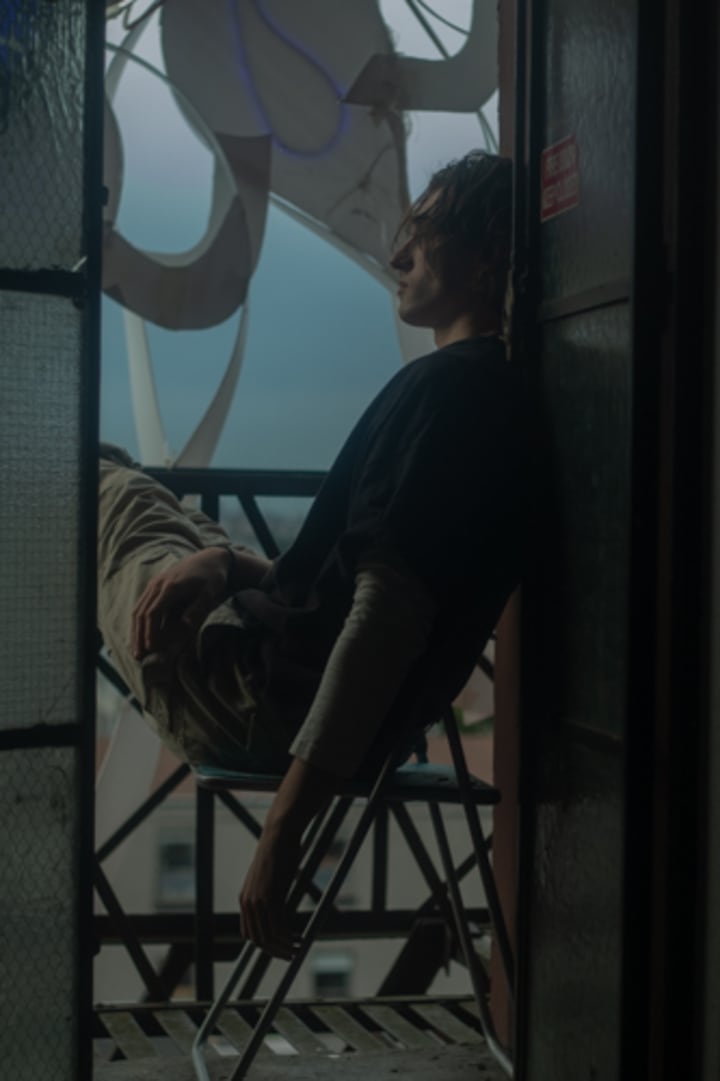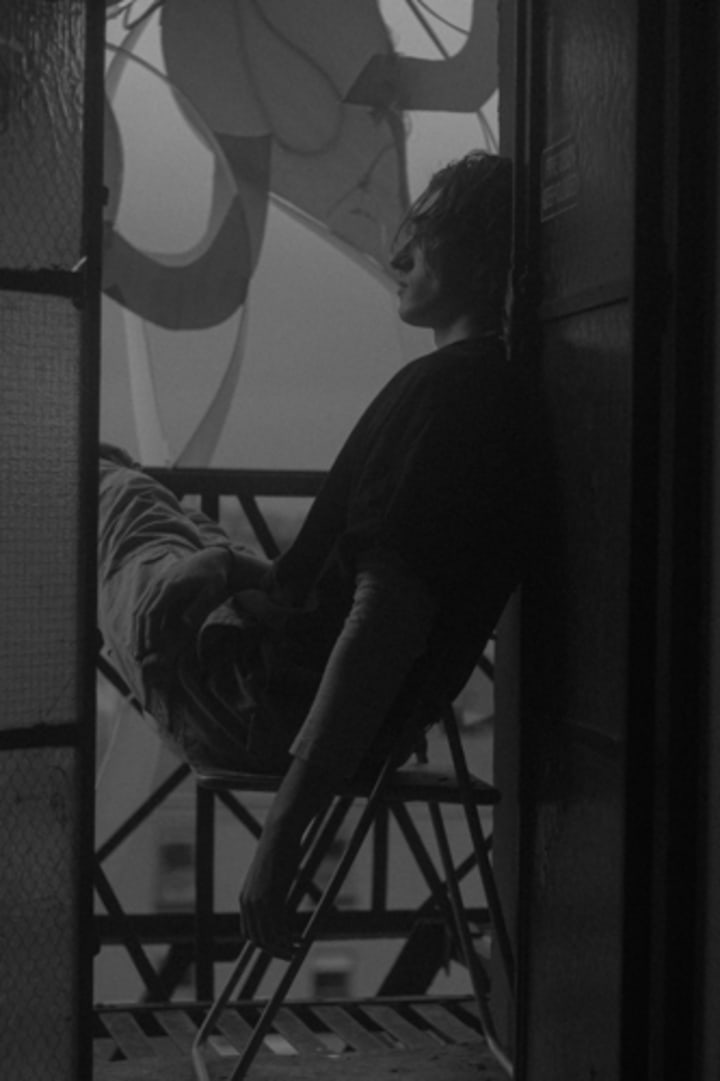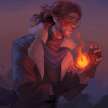Painting Memories
The most important part of photo editing doesn't involve a computer.

Why do we take photos?
We all have eyes able to flourish an image putting any camera to shame: so why then, do we bother with photos?
An obvious answer is due to a photo’s permanence in the world. An image through the eye stays with us only as long as we conceive it, then it’s immediately contaminated by our memory where recall isn’t enough to make an exact copy as appealing.
Although incredible, cameras aren't perfect. Photos in the pre-production phase (that is freshly taken and still on the HD card in the camera) rarely look like what we see through our eyes. This may initially seem like a bad thing, but it truly is a gift in disguise.
For we get to colour our memories.
Part 1: Due Diligence
The editing process will always begin when a camera is in your hands.
When I was in music school, we often talked about the recording chain. That is the chain that takes performance (like singing) into the DAW (digital audio workstation) where the audio is mixed and mastered together to create what we hear on the radio.
Every single class our teacher would say to us,"Adele could win a grammy through an iPhone speaker."
I never understood until later the full meaning behind what he was telling us, and I seriously wish I had.
My teacher was saying the most important part in the recording process isn't what kind of microphone you use to record the vocals or how much autotune you add to them, neither is it the price of the speakers you mix through or even the skill of the mixer himself.
The most important part of the recording process is the recording itself.
Adele could win a grammy through an iPhone speaker because the raw signal of her singing is better than most other artists could do with the most expensive microphone, a team of mix engineers, and a $100,000 budget.
The most important part of the editing process is making sure you get the best RAW image you possibly can. This means you should figure out the right ISO, aperture, f-stop, camera orientation (landscape or portfolio), and style before taking any photos.
Now this brings us to our first hiccup in explanation: what do I mean by "right"?
Everything you do can be an artistic choice. If you want to load up the ISO and blast out the image with artificial light you can absolutely do that.
Will it look good?
Absolutely not.
But who cares?
If you do care and want your images to look "good" (whatever that means) then assume that in every situation you're in, there likely is a, at least, more-right way of how you're going to set up your camera settings.
This first step in the editing process I call due diligence.
You should know how your camera works and how to get the most out of it. You should know in what situations your camera thrives and in what ones it struggles. For example, I have a Canon 70D that has a hard time shooting in low light compared to its Nikon competitors. That is something I take into account if planning a night shoot.
The second part of due diligence is actual contemplation of style choice and artistic or composition planning. We all wish we could pick up a camera, walk outside, and be the next big photographer on instagram from our not-so-interesting pictures of the street down the street.
It could happen, but if it did that would cheat out other photographers who put in the work.
Before you press the shoot button, you should know what you want to accomplish.
I'll be honest here, I don't really know how you should do this process. Sure, I know how I do it, but who am I to tell you how to manifest?
All I can say is you should be dreaming, and every time you close your eyes you should be lost in imagination and the colours of your artistic expression.
Part 2: Picture Perfect
So you've got perfect settings, perfect lighting, and an imagination like Picasso himself.
You press the magic button and find a lovely image sitting on your camera screen.
Now what?
All editing software is pretty much the same thing just organized differently.
I do all my editing in Lightroom and Photoshop but alternatives like DxO PhotoLab and Luminar AI can get you to your goal just as easily.
What you're looking for in an editing program is comfort.
Adobe has really mastered a professional looking interface but the learning curve can be steeper then other editing software. Luminar AI is easier for beginners. Many photographers have in-depth reviews on youtube.
*Now you have your editing software.*
In post-production, the first step is to correct.
Even with as much setup and setting manipulation as possible you will likely have to correct something, even if it's small.

In this unedited image, I kept my aperture open more than was probably necessary, causing too much light to come in from the outside near my head.
I tell you this now and I mean it.
It it always better to subtract light in a photo than it is to add it.
The lingering effects that come with adding artificial light are infinitely worse and more noticeable than those that come with the subtraction of it. So if anything, slightly brighter is better than too dark.
When looking at your image you should first pick out what you want to correct. As I said, the first thing I noticed was the overabundance of light causing a loss of contrast between the subject (Me) and the background (the fire escape and sky). The light also drowns out the colours in the image.

Was that sky even blue?
I haven't changed or added any colour to this photo. That sky was always blue, the white light just owned all the real-estate. Notice how much more balanced the image is, from the light, to the colours, to the style.
When we edit too correct, we edit to balance.
You want your image to be realistically unrealistic. That balcony didn't look like that, at all really, when I setup that tripod. But this is your time to try and try again. Go crazy on those editing sliders. Slide them to their extremes to see what each one is doing to the photo. Play with them until you get the photo you want.

Part 3: The Magic of intention

We edit to amplify. Never to change.
When I talk of painting a memory, this is not how this hallway looked in that moment nor is it how that hallway felt. With editing, we are able to change how one feels in the presence of that photo, with something as simple as exposure (lighting).
Let's compare two photos, one underexposed and one overexposed.

How does this photo make you feel compared to the original?
In this photo I added more light with exposure and added contrast so she can still be distinguished from the background. You would likely associate this image with words like bright, daytime, or possibly even happy, when compared to the original.
A good question to ask yourself is: what's inside darkness?
I know, it sounds arrogantly philosophical.
BLEH.
An answer is, we don't know.
I'm terrified of deep dark water. I grew up a two minuet walk from the ocean and swam in it for hours a day every summer. I was never scared in the daytime, but come nighttime, I'm not even getting close.
We associate darkness with unknowns and therefore react in a hesitant way. This isn't to say it's a negative way but the important thing to draw from this is that photo editors should be sculpting a reaction. We are visual creatures. When looking at an image, the camera the image was taken from becomes the eyes of the person seeing the image.

How would you remember this image?
Would you still associate it with the same words?
We edit to amplify the emotion of an image. Although it's used for corrections, only using it so is to forget the real power behind post-production.
We paint a memory by seeking certain emotions from the viewer.
Part 4: What separates good and bad editing? + Final thoughts
Everyone can edit.
You can fork out 10$ a month and have access to some of the best photo-editing software on the market. You can know what every single button and shader does within the program and how to manipulate any image to get what you want.
But that's just it, what do you want?
Einstein wasn't a genius because of his superior penmanship.
Beethoven didn't spend his time searching for the best piano.
And Adele isn't one of the best artists of the decade because of the microphone she uses.
This seems obvious right?
Usually, talented individuals stand the best chance of doing well in their respective creative pursuits. This seems like a universal truth since capitalism is built around the quality of product related to the cost that product takes too create. If we accept this as universal truth then the real question becomes: what part of photo-editing is most important?
That is the beginning of your photo-chain, you and your imagination.
When practiced, editing becomes less about trial and error and more about the journey to a desired result. The photo is already edited in your head, you know what you want it to look like, so you use the editing program as a vehicle for that journey. If you lack a practiced imagination, be prepared for an uninspiring image. Just like if you have a nails-on-chalkboard-like singing voice, be prepared for your only fans to be your family.
We tend to think that imagination is something the can't be trained, that those at the top of any creative field are blessed with this unparalleled ability to be artistically interesting. In some cases, this is true. In the vast majority of cases, you're dealing with someone who was just as uninspiring and mediocre as the rest of us, the only difference being is they knew what they wanted to accomplish and translated that into the quality of their images.
So before you get out your camera or sit down to edit, I ask you to wonder for a moment: what do you want?
Don't be worried by the lack of an answer, by just asking the question you're well on your way.
Happy editing!
About the Creator
William Johnston
Just some guy trying to figure it out.






Comments
There are no comments for this story
Be the first to respond and start the conversation.